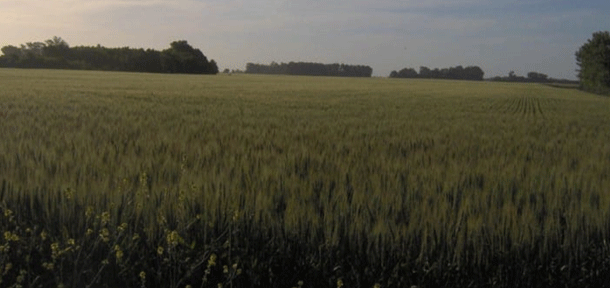In the heart of Argentina’s fertile plains, the city of Tres Arroyos is proving that even in the midst of a national economic crisis, agriculture — and barley in particular — can offer a way forward. With inflation soaring to nearly 300% in April 2024 (before easing to 166% in November) and over half the population now living below the poverty line, barley has become more than just a cereal crop. It’s become a lifeline.
According to Alejandro Vejrup, agricultural producer and manager of Cooperativa Alfa, barley has played a central role in his family’s business for decades. “It’s a very reliable crop for this area,” he says, noting that barley often outperforms wheat, while using similar inputs and fertilizers. One of its biggest advantages? Timing. Barley is harvested 7–10 days earlier than wheat, giving farmers an invaluable window to plant a second crop — typically soybeans, corn, or sunflower — within the same growing season.
This early harvesting schedule allows for more efficient soil moisture management, reduced input costs, and higher overall farm productivity. It also diversifies risk — an essential strategy when economic shocks can quickly ripple through every layer of production.
Barley’s Economic Footprint
Argentina may be facing tough macroeconomic conditions, but its agricultural sector remains resilient, contributing 15.7% of the national GDP and 10.6% of tax revenues, as of the latest comprehensive figures. Within this sector, barley shines not just as a crop, but as a key player in Argentina’s booming beer industry.
A 2023 report by Oxford Economics and the World Brewing Alliance found that the beer sector in Argentina supported 120,000 jobs and contributed $721 million to GDP, with 89% of brewers’ supplier spending directed toward local businesses. This includes barley farmers, maltsters, logistics companies, and more — creating an integrated value chain deeply rooted in Argentina’s agricultural regions.
With global demand for beer and malt continuing to rise, especially across Latin America and Southeast Asia, barley-growing regions like Buenos Aires Province are well-positioned to take advantage of export opportunities. Argentina is already one of the world’s top ten barley exporters, sending millions of tons annually to countries such as China, Brazil, and Saudi Arabia.
Facing Inflation with Smart Cropping Strategies
For farmers like Vejrup, barley’s value is both practical and financial. Amid rising input costs, fuel prices, and currency volatility, crops that offer reliable yields, dual-cropping potential, and strong market demand are essential. In regions with the right agro-climatic conditions, barley becomes a strategic choice — not just for survival, but for sustainable business growth.
Many Argentine farmers are also exploring contract farming with breweries and malt houses, which helps secure prices in advance and stabilize income — a critical advantage in times of economic turbulence.
In the shadow of Argentina’s economic crisis, barley has emerged as more than a crop — it’s a smart farming strategy, an engine for rural employment, and a pillar of the national economy. As the country looks for pathways to recovery, investing in resilient, high-impact crops like barley may be one of the most promising routes forward for Argentina’s farming communities.
Error





